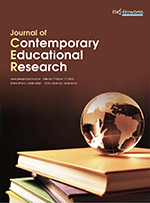The Origin and Evolution of “ 狂欢 ” (kuanghuan)
Abstract
The term “ 狂 欢 ” (kuanghuan) was initially a composite phrase in the Chinese language. Subsequent to its introduction, the Western concept of “carnival” allowed it to evolve into a complete vocabulary item. Nonetheless, the term “ 狂 欢 ” (kuanghuan) has undergone shifts in its part of speech, denotation, and cultural significance as used by the speakers. This paper delves into the origin and evolution of “ 狂 欢 ” (kuanghuan), aiming to elucidate the ongoing interplay and transformation between language and culture.
References
Wang Y, Huang P, 2019, Semantic Classification, Word Formation Patterns and Speech of English-Origin Chinese Loanwords - Taking the 3407 English-Origin Chinese Loanwords in the “Chinese Loanword Dictionary” as an Example. Journal of Cangzhou Normal University, 2019(2): 43–49.
Dictionary Editorial Office of the Institute of Linguistics, Chinese Academy of Social Sciences, 2006, Modern Chinese Dictionary (5th Edition), The Commercial Press, Beijing.
Dictionary Editorial Office of the Institute of Linguistics, Chinese Academy of Social Sciences, 2012, Modern Chinese Dictionary (6th Edition), The Commercial Press, Beijing.
Dictionary Editorial Office of the Institute of Linguistics, Chinese Academy of Social Sciences, 2016, Modern Chinese Dictionary (7th Edition), The Commercial Press, Beijing.
Zhang S, 2006, Dialogue with Bakhtin, dissertation, East China Normal University.
Ling J, 2008, Bakhtin’s Carnival Theory from the Historical Perspective. Journal of Northwest Normal University: Social Science Edition, 2008(4): 14–20.
Song C, 2008, The Religious Dimension of Carnival—A Study on Bakhtin’s Carnival Theory, dissertation, Renmin University of China.

